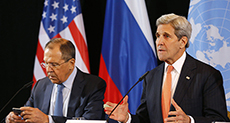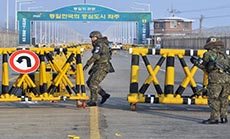
DIARY OF RESISTANCE OPERATIONS – FEBRUARY 1998

The following are the Islamic-Resistance operations that took place during the month of February in 1998
Islamic Resistance Performs 112 Operations against Occupation, Agents in February 1998
In February, the Islamic Resistance increased the number of its operations to 112. "The Syrian Social Nationalist Party (SSNP)" as well performed another operation. 3 "Israeli" soldiers, an officer, and 2 Lahd militiamen were killed, also 12 "Israeli" soldiers and 4 Lahd militiamen were wounded, the enemy acknowledged.
On the other hand, 4 Islamic-Resistance fighters were martyred.
Operation Baater-Jezzine, February 6, 1998
On February 6, 1998, the Islamic-Resistance fighters blasted a Lahd patrol on Baater-Jezzine Route. The fighters also struck Baater-Jezzine Crossing Point with machine guns and rocket shells. Thus, the Zionist soldiers and the Lahd militiamen suffered many casualties. 2 Lahd militiamen were wounded, and 2 others were killed, the occupation sources said.
One of the deceased militiamen, George Fouad el-Khouri, was captured by the Islamic Resistance on April 4, 1996 and released on July 21, 1997 when the Resistance made a swap with the occupation forces.
For its part, the Lahd-Militia channel declared 3 explosives had hit a Lahd force, killing 2 and wounding 2 others, one of whom was in a critical situation and was transported to a hospital in occupied Palestine.
Blat Confrontations, February 7, 1998
On February 7, 1998, the Islamic Resistance performed around 23 operations against Zionist-Lahd patrols and sites. At 4 a.m., the fighters first attacked Zionist infantrymen patrolling in the surroundings of Blat Site, 3 kilometers away from the Lebanese borders with occupied Palestine, in the north of "Zarait Settlement". The infantrymen belonged to "the Givati Brigade", the occupation sources declared. The operation actually made the settlers remain in shelters for 24 hours.
In the meantime, the Islamic-Resistance Fire Backup Unit razed Blat Site, preventing it from backing the patrol targeted. The fighters monitored several reinforcements oncoming the patrol more than once, and they attacked al-Qantara Site and enemy reinforcements in Sheheen.
In the evening of that day, as well as in the following morning, the Resistance struck Blat Site more than once and attacked Lahd troops marshaled on Sojod-ar-Rihan Route and at Sojod Site while enemy vehicles were entering the site.
The operation series brought about many casualties to the enemy. A sergeant was killed, and 7 soldiers were wounded, the enemy sources acknowledged. Sergeant Nicolai Rabakhof (32 years old), was one of the Jews brought from Russia to occupied Palestine. Having refused to allow his burial in the Zionist military cemeteries, his mother transported his corpse back to Russia.
Chief of "the West Brigade" of the occupation military spoke about violent clashes taking place between Hizbullah fighters and the "Israeli" reinforcements. The fighters bombarded the reinforcements so hard that the "Israeli" helicopters were unable to evacuate the casualties before several hours.
"Haaretz" quoted one of the soldiers wounded in Blat surroundings, "We were marching in a single line... We heard the sounds of two consecutive explosions. Then we were attacked with fire. When all that happened, I thought that was the end and that I would never get out of that place... It was so scary!"
The confrontation along the marches of Blat Site was a real war, the targets of which resembled those of the war in July 1993 and April 1996. The Resistance led the confrontation with the enemy's patrols, tanks, artillery, and warplanes all along that frontline. The Resistance, therefore, foiled all repeated "Israeli" attempts to change the military equation, stated "al-Lewa' Newspaper".
Operation Sojod, February 21, 1998
On February 21, 1998, several Islamic-Resistance groups attacked the sites of the Radar, Blat, Shkief Fort, ad-Dabsheh, Sojod, and Bir Kallab, in addition to an infantry accompanied by a motorcade in Kassaret el-Oroush. Positioned approximately 20 m away from Sojod Site, Hizbullah fighters launched tens of rocket shells and machine gun bullets against the site. "Israeli" helicopters then had to back Sojod Site, news agencies reported upon the statement of the enemy channel's military correspondent.
The "Israeli" soldiers were shocked by the fighters' determination and spirit, said "Maarif", adding, "The "Israeli" reinforcements reaching Sojod Site ended the attack against Sojod Site after confrontations had lasted for several hours.
For its part, "the Jerusalem Post" pointed out, "Hizbullah fighters kept shelling the "Israeli" sites even after they had ended their attack against Sojod Site."
Resistance Bombards Blat Site, February 26, 1998
On February 26, 1998, the Islamic-Resistance artillery twice shelled Blat Site after having monitored enemy troops marshaled there. Several site constructions were demolished.
Another Islamic-Resistance group lay in ambush near Sojod Site's main mound. And as a group of the site garrison gathered, the fighters opened fire on them, definitely causing them casualties. The Zionist military censorship blacked out news on the operation for 2 days. Then the enemy reported 2 soldiers and an officer had been killed and 3 others wounded.
Other enemy media reported upon the statement of Chief of "the Northern Command" Amiram Levin, "An artillery shell was launched against 4 soldiers and an officer. Thus, 2 soldiers and the officer were killed, and the other two were severely wounded. The enemy channel's military correspondent declared the officer was first lieutenant.
Resistance fighters Break into Bir Kallab Site, Resistance Media Tricks Enemy, February 27, 1998
On February 27, 1998, the Islamic Resistance made a new intelligence accomplishment, breaking into Bir Kallab Site. Earlier, the enemy had covertly replaced the Lahd garrison of the site with forces of "the Paratroopers Brigade".
The Resistance artillerists bombarded the main gate, the north side, and the west side of the site, in addition to the mounds and fortifications in the south of the site. Then the artillerists broke into the site, cleansed it from the "Israeli" paratroopers, dominated it for some time, and posted Hizbullah's standards onto its mounds before leaving.
In the meantime, other Islamic-Resistance artillerists attacked the sites of, Blat, al-Qalaa, ad-Dabsheh, Sojod, Kassaret el-Oroush, in addition to the radar Site and the Cliff Site. While enemy reinforcements were on their way to the site, the Resistance artillerists confronted them, demolishing a military vehicle 200 meters away from Bir Kallab Crossing Point. The enemy acknowledged 4 soldiers had been wounded, the condition of one of whom was critical. The operation resulted in more casualties, however.
After the Islamic Resistance had displayed a video tape on the operation, Chief of "the Liaison Unit" of the occupation military Erez Gerstein claimed the Resistance fighters hadn't entered the site. But in fact, Gerstein was set up by the Islamic-Resistance media. That is, after he had claimed so, the Resistance displayed more scenes confirming the Resistance fighters had indeed broken into the site. Consequently, the Zionist claims that aimed at bringing the "Israeli" soldiers back to their spirits were refuted.
As to this issue, the Islamic Resistance issued the following statement "It seems Gerstein hasn't learned from the trap the enemy military fell into when it denied the fighters had entered ad-Dabsheh Site and posted Hizbullah's flag in the daylight. So the video tape displayed at night proved Gerstein's allegations false. And as the former Chief of "the Northern Command" Eely Emetai tried to exploit the unclear picture of a primary video tape exposed at night, also showing the fighters breaking into Sojod Site on February 12, 1998. But next day, the Resistance's camera refuted his claims, displaying another video tape recorded inside Sojod Site, where the fighters appeared.
Hereupon, having seen that the video tapes displayed on "al-Manar Television" had been recorded by a camera placed outside the site, the enemy claimed the scenes referred to an old attack several months ago. The enemy, thus, revealed no details regarding the operation.
The other scenes recorded showed Zionist soldiers and Lahd militiamen marshaled at the site one day before the fighters broke into it. Following were scenes of the fighters breaking into the site and posting Hizbullah's standards all over the site. Such scenes have again disgraced the enemy military and leaders."
Now the Islamic Resistance distributed the video tapes of the fighters breaking into the site. For his part, Hizbullah Secretary General His Eminence Sayyed Hassan Nasrallah honored the brigade of fighters performing "Operation Bir Kallab". His Eminence then presented "al-Hadi Trophy" to the group that had broken into the site and copies of the holy Qur'an to the other groups. More particularly, Sayyed Nasrallah honored the military cameramen. The celebration included a banquet in honor of the fighters, which was attended by (former) Head of "the Loyalty to the Resistance Bloc" MP Sayyed Ibrahim Amin as-Sayyed ;Head of the Hizbullah Office in the South Sheikh Nabil Qaouk; the Political Head of the South, Sheikh Muhammad Koutharani, and Head of Central Media, Engineer Nayef Krayem.
Sayyed Nasrallah congratulated the fighters for this accomplishment, and he thanked them for dedicating this operation to the soul of (his martyred son) Sayyed Hadi Hassan Nasrallah. His Eminence as well eulogized martyr Hassan Harb for the military and moral valor the martyr had demonstrated during the operation.
In reality, "Operation Bir Kallab" proved the Islamic Resistance's ability to confuse the ground and air forces of the enemy, and it refuted the enemy's claims as to "the actual coordination" between these forces. Sayyed Nasrallah iterated the pictures the Resistance was publishing were crucial as to documenting the Islamic-Resistance operations.
Soure: moqawama.org
Comments

Kerry to Hold Fresh Talks with Russia on Syria
8 years ago
All but 4 Nations are Subject to NSA’s Espionage
10 years ago
Koreas Agree to Re-open Kaesong Industrial Zone
11 years ago